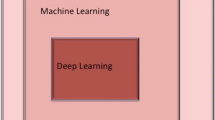Abstract
There are a lot of potential causes of shoulder fractures due to the joint's greater mobility compared to others in the body. To identify these breaks, doctors use data from imaging modalities like as computed tomography (CT), MRI, or X-rays. The goal of this study is to help clinicians by developing a system that can use quantum photonics and artificial intelligence (AI) to determine whether an X-ray of the shoulder shows a fracture or not. This study uses machine learning photonics and quantum computing to evaluate joint bone dislocation in athletes. Regression-based pulse convolutional segNet architecture with nanophotonic analysis (RPCSeg_NP) is used in this investigation to examine the bone dislocation. The validation accuracy, sensitivity, positive predictive value, and similarity index (SSIM) are measured throughout the experimental study. Artificial intelligence has the ability to precisely identify and categorise proximal humerus fractures on standard shoulder AP radiographs. To find out if using artificial intelligence in the clinic is feasible and if it can enhance patient care and results in comparison to existing orthopaedic evaluations, more research is required.










Similar content being viewed by others
Data availability
All the data’s available in the manuscript.
References
ALH, P.S.: Human activity recognition using machine learning approach. J. Robot. Control (JRC) 2(5), 395–399 (2021)
Drias, H., Drias, Y., Houacine, N.A., Bendimerad, L.S., Zouache, D., Khennak, I.: Quantum OPTICS and deep self-learning on swarm intelligence algorithms for Covid-19 emergency transportation. Soft. Comput.comput. 27(18), 13181–13200 (2023)
Farook, T.H., Dudley, J.: Automation and deep (machine) learning in temporomandibular joint disorder radiomics: A systematic review. J. Oral Rehabil.rehabil. 50(6), 501–521 (2023)
Grauhan, N.F., Niehues, S.M., Gaudin, R.A., Keller, S., Vahldiek, J.L., Adams, L.C., Bressem, K.K.: Deep learning for accurately recognizing common causes of shoulder pain on radiographs. Skeletal Radiol.radiol. 51(2), 355–362 (2021)
Hernigou, P., Barbier, O., Chenaie, P.: Hip arthroplasty dislocation risk calculator: evaluation of one million primary implants and twenty-five thousand dislocations with deep learning artificial intelligence in a systematic review of reviews. Int. Orthop. 47(2), 557–571 (2023)
Houssein, E.H., Abohashima, Z., Elhoseny, M., Mohamed, W. M.: Machine learning in the quantum realm: The state-of-the-art, challenges, and future vision. Expert Syst. Appl. 194, 116512 (2022). https://doi.org/10.1016/j.eswa.2022.116512.
Ito, S., Mine, Y., Yoshimi, Y. et al. Automated segmentation of articular disc of the temporomandibular joint on magnetic resonance images using deep learning. Sci. Rep. 12, 221 (2022). https://doi.org/10.1038/s41598-021-04354-w
Kumar, P., Sharma, N., Kumar, T.G. et al. Explainable AI based wearable electronic optical data analysis with quantum photonics and quadrature amplitude neural computing. Opt. Quant. Electron. 55, 760 (2023). https://doi.org/10.1007/s11082-023-05037-8
Kumela, A.G., Gemta, A.B., Hordofa, A.K., Dagnaw, H., Sheferedin, U., Tadesse, M.: Quantum machine learning assisted lung cancer telemedicine. AIP Adv. 13(7), 075301 (2023). https://doi.org/10.1063/5.0153566
Lee, J., Chung, S.W.: Deep learning for orthopedic disease based on medical image analysis: Present and future. Appl. Sci. 12(2), 681 (2022). https://doi.org/10.3390/app12020681
Lee, YH., Won, J.H., Kim, S. et al. Advantages of deep learning with convolutional neural network in detecting disc displacement of the temporomandibular joint in magnetic resonance imaging. Sci. Rep. 12, 11352 (2022). https://doi.org/10.1038/s41598-022-15231-5
Li, M., Punithakumar, K., Major, P.W., Le, L.H., Nguyen, K.C.T., Pacheco-Pereira, C., Almeida, F.T.: Temporomandibular joint segmentation in MRI images using deep learning. J. Dentist. 127, 104345 (2022). https://doi.org/10.1016/j.jdent.2022.104345
Maheshwari D, Garcia-Zapirain B, Sierra-Sosa D (2022). Quantum machine learning applications in the biomedical domain: A systematic review. Ieee Access.
McCay, K.D., Ho, E.S., Shum, H.P., Fehringer, G., Marcroft, C., Embleton, N.D.: Abnormal infant movements classification with deep learning on pose-based features. IEEE Access 8, 51582–51592 (2020)
Rouzrokh, P., Ramazanian, T., Wyles, C.C., Philbrick, K.A., Cai, J.C., Taunton, M.J., Erickson, B.J.: Deep learning artificial intelligence model for assessment of hip dislocation risk following primary total hip arthroplasty from postoperative radiographs. J Arthroplast 36(6), 2197–2203 (2021)
Sezer, A., Sezer, H.B.: Convolutional neural network based diagnosis of bone pathologies of proximal humerus. Neurocomputing 392, 124–131 (2020)
Suhasini, S., Tatini, N.B., Arslan, F. et al. Smart explainable artificial intelligence for sustainable secure healthcare application based on quantum optical neural network. Opt Quant Electron 55, 887 (2023). https://doi.org/10.1007/s11082-023-05155-3
Swain T, Mishra S, Gupta D, Alkhayyat A (2023). Integrated quantum health care with predictive intelligence approach. In: International Conference On Innovative Computing And Communication (pp. 411–421). Singapore: Springer Nature Singapore.
Wei, J., Li, D., Sing, D.C., Yang, J., Beeram, I., Puvanesarajah, V., Yi, P.H.: Detecting total hip arthroplasty dislocations using deep learning: clinical and Internet validation. Emerg. Radiol.. Radiol. 29(5), 801–808 (2022)
Yoon, K., Kim, J.Y., Kim, S.J., Huh, J.K., Kin, J.W, Choi, J.: Explainable deep learning-based clinical decision support engine for MRI-based automated diagnosis of temporomandibular joint anterior disk displacement. Comput. Methods Programs Biomed. 233, 107465 (2023). https://doi.org/10.1016/j.cmpb.2023.107465.
Zhao, Q., Feng, Q., Zhang, J., Xu, J., Wu, Z., Huang, C., Yuan, H.: Glenoid segmentation from computed tomography scans based on a 2-stage deep learning model for glenoid bone loss evaluation. J. Shoulder Elbow Surg. 32(12), e624–e635 (2023)
Funding
This research not received any fund.
Author information
Authors and Affiliations
Contributions
The author confirms sole responsibility for the following: study conception and design, data collection, analysis and interpretation of results, and manuscript preparation.
Corresponding author
Ethics declarations
Conflict of interest
There is no conflict between us.
Ethical approval
This article does not contain any studies with animals performed by any of the authors.
Additional information
Publisher's Note
Springer Nature remains neutral with regard to jurisdictional claims in published maps and institutional affiliations.
Rights and permissions
Springer Nature or its licensor (e.g. a society or other partner) holds exclusive rights to this article under a publishing agreement with the author(s) or other rightsholder(s); author self-archiving of the accepted manuscript version of this article is solely governed by the terms of such publishing agreement and applicable law.
About this article
Cite this article
Xu, Y. Joint bone dislocation analysis for athlete player using quantum photonics in healthcare and sports application. Opt Quant Electron 56, 447 (2024). https://doi.org/10.1007/s11082-023-06096-7
Received:
Accepted:
Published:
DOI: https://doi.org/10.1007/s11082-023-06096-7




